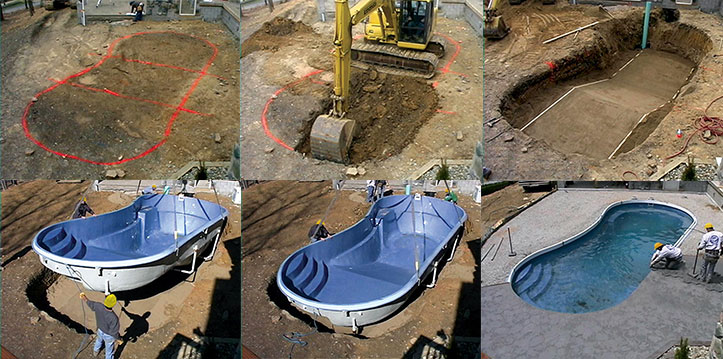While your pool undoubtedly gets most of its use in the summertime, it needs to be properly taken care of year-round. Seasonal maintenance is essential to keeping your water playground looking its best and ensuring it lasts for years. Here are some season-specific guidelines for keeping your pool in top shape.
Winter Pool Maintenance
If you live in a northern location, you’ll be closing down your pool for the winter months. Proper procedures must be followed, because freezing temperatures can damage pool components if adequate measures aren’t taken.
Make sure your pool’s water pH is balanced as to alkalinity, chlorine, water hardness, and other elements. Begin this testing process about a week before you close down the pool. Consult the Association of Pool & Spa Professionals Fact Sheet for specific procedures to follow if you live in severe climates such as the Snow Belt.
Remove, clean, and store all ladders and diving boards. Brush the interior walls and floor with a soft brush approved for vinyl walls. Skim the surface to remove any debris or floating objects, and vacuum according to your manual’s instructions. Clean the skimmer baskets and reduce the pool’s water level a few inches below the skimmer opening. Turn off the filter pump and drain the equipment according to your manual.
Finally, install a winter cover. Mesh and solid safety covers are specifically designed for protecting your pool during winter months. They can be custom-made to fit any pool shape, integrating perfectly with your pool area design. These durable covers block sunlight and keep debris out of the pool so it stays clean and ready for spring opening.
Spring Cleaning
Debris is likely to have gathered on top of your pool cover over the course of the winter, so before you remove it for spring, clear it first with a leaf blower or broom. After you’ve removed the cover, hose it off and then let it dry completely before storing it in a cool, dry location.
Check and reconnect the pump and filtration system. Scrub the interior walls and use a skimmer net to clean the surface of the pool. To remove any algae or bacteria that may have grown during periods of non-use, apply a chlorine shock treatment. Verify the pool’s alkalinity level (it should be 80 to 120 ppm) and test the water’s pH balance. The ideal pH reading is 7.4 to 7.6. Finally, raise the water level to halfway up the skimmer opening. Watch for an increase of petals in the water as spring gets under way. Keeping plants trimmed will help reduce the amount of debris ending up in the pool. Now it’s time to jump in!
Summer Swimming Pool Cleaning
In addition to regularly testing the pool’s chemical levels, stay on top of routine cleaning before grime and debris can build up. Every few days, skim the surface to remove floating debris. Brush the sides of the pool gently to clean off residue from suntan products. Clean the strainer baskets weekly and vacuum regularly according to your manual’s instructions.
Use a high-quality algaecide and apply chlorine weekly. The chlorine level should be maintained at the level of 1-4 parts per million (ppm). After heavy rain or heavy pool usage, chlorine levels will decrease, so adding an occasional shock treatment is recommended. Shock treatments are best done in the early morning or early evening, because strong sunlight will make the treatment less effective. A metal chelation product can help eliminate stains on the interior walls due to corrosion of metal equipment or rainwater.
Finally, visually check the popup nozzles for the pool’s circulation section to make sure they are functioning properly. During the summer months, when pool usage is high, run the circulation system four to six hours a day.
Fall Pool Cleaning
Leaves are your biggest problem in the fall, and so it’s important to clean these out of the pool before they can clog the skimmer and pump baskets as well as the plumbing lines. You may find you have to skim the pool every day. Don’t allow leaves to sink and remain at the bottom of the pool, as some leaves can stain the floor. Make sure to also clean the strainer baskets regularly. This is a good time to also check your pool cover for any tears or damage.
Keeping your pool in top shape is easy as long as you make it a year-round routine. Remember to always contact a Latham independent pool professional before any DIY-attempts, or with any questions.
Editor’s note: Originally posted 5/2015. Updated for relevance.





